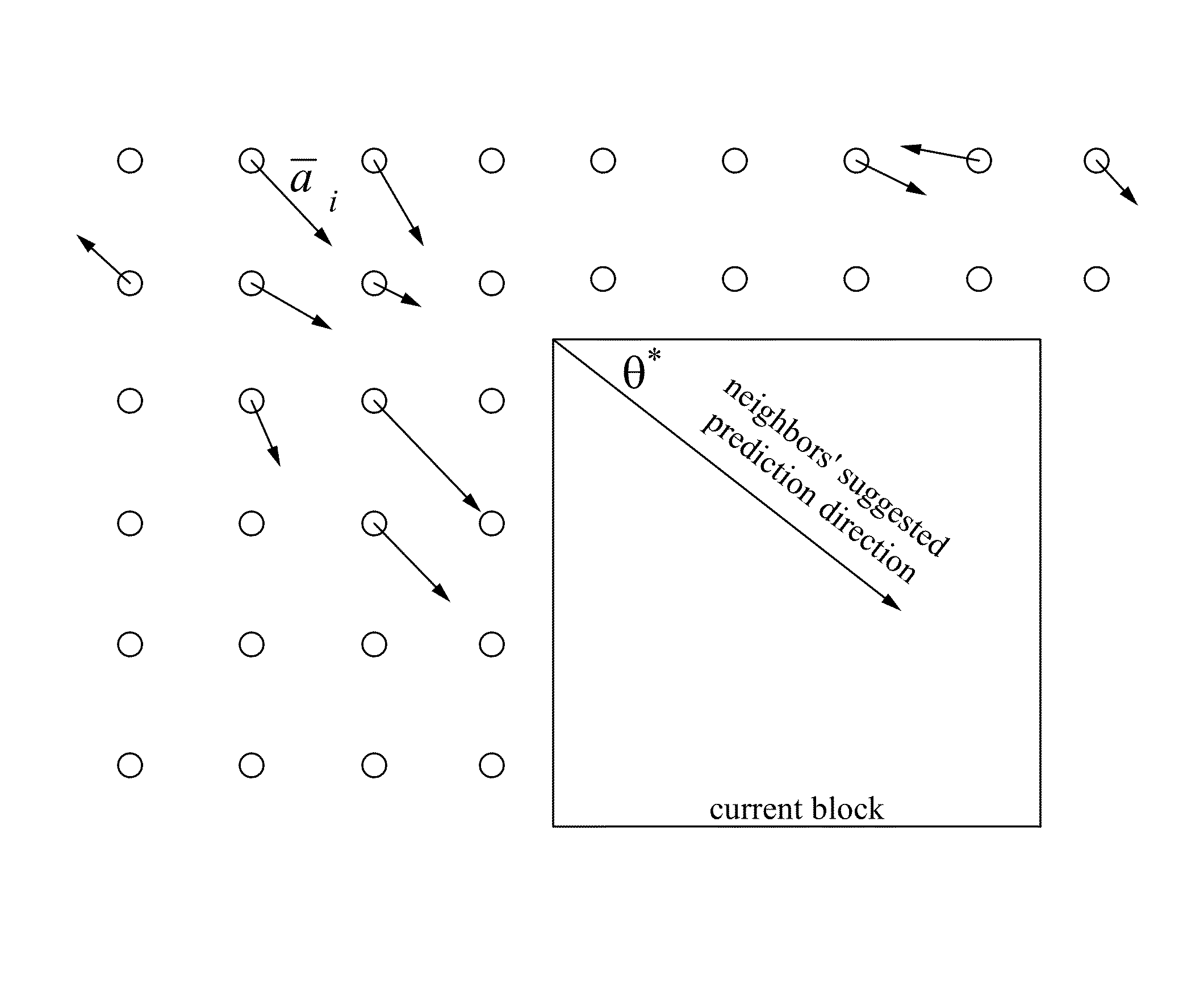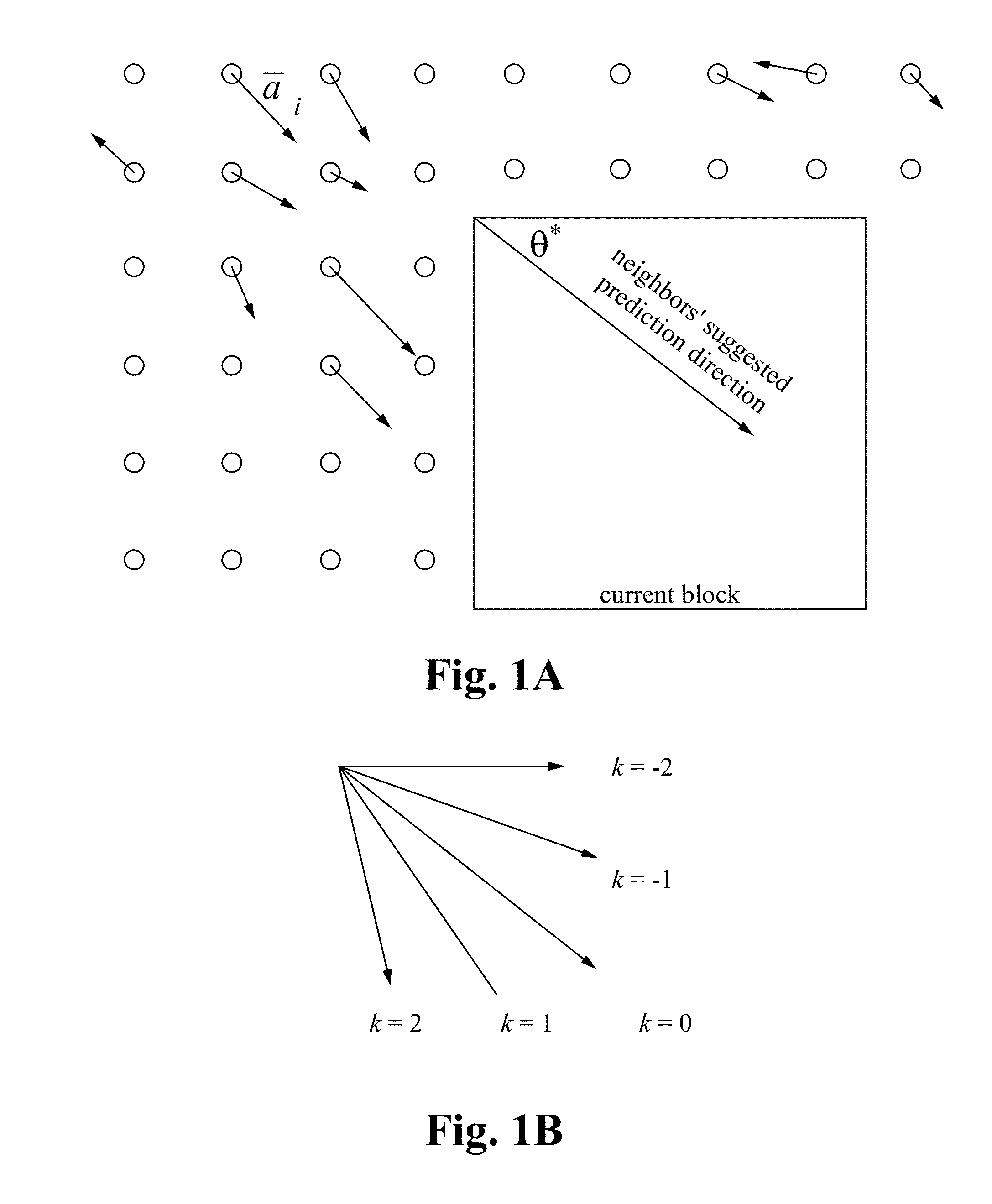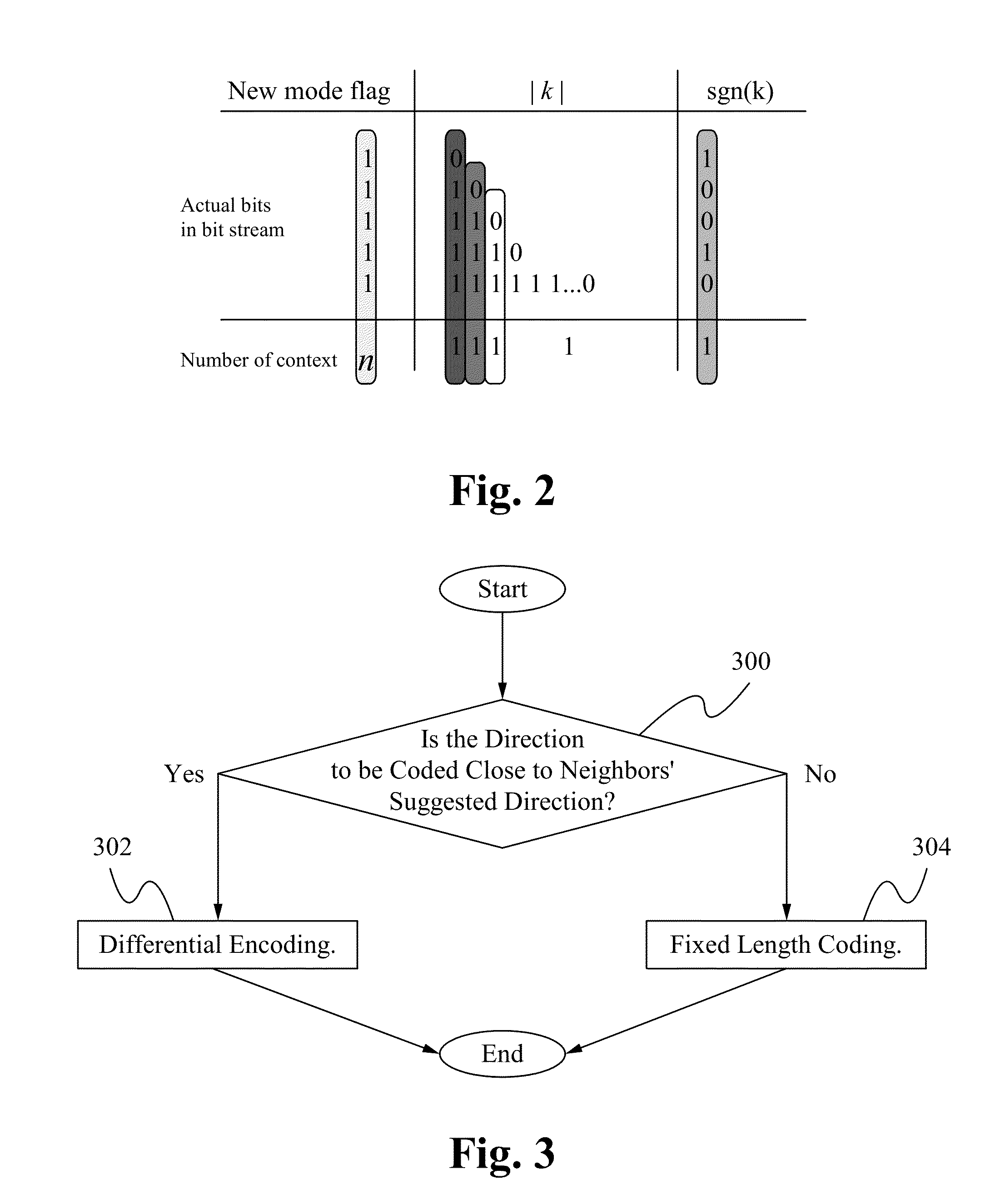Differential coding of intra directions (DCIC)
a technology of intra-direction coding and coding, applied in the field of image processing, can solve the problems of lack of precision for arbitrary directional patterns and accuracy lack of accuracy to exploit geometric dependency between blocks, and achieve the effects of less correlation, more precise directional prediction, and lack of precision
- Summary
- Abstract
- Description
- Claims
- Application Information
AI Technical Summary
Benefits of technology
Problems solved by technology
Method used
Image
Examples
Embodiment Construction
[0015]To address the problems of previous intra prediction methods, a new method accurately predicts the intra directions from reconstructed neighboring pixels and differentially encodes the intra directions. This allows a more precise directional prediction without the significant increase in the cost for transmitting the side information.
[0016]The method described herein takes advantage of the available edge information in the reconstructed neighborhood of the block to be coded. To encode an image block, the well-known Sobel operators:
[0017]Gx=[-101-202-101],Gy=[-1-2-1000121]
are first applied for a block's available neighboring pixels as illustrated in FIG. 1A to obtain the image gradient vectors. For each pixel, the edge direction is obtained by taking the perpendicular direction to its gradient vector. Edge direction vectors commonly are not perfectly aligned. Therefore, finding the best prediction direction with a high precision using the edge direction vectors is not a trivia...
PUM
 Login to View More
Login to View More Abstract
Description
Claims
Application Information
 Login to View More
Login to View More - R&D
- Intellectual Property
- Life Sciences
- Materials
- Tech Scout
- Unparalleled Data Quality
- Higher Quality Content
- 60% Fewer Hallucinations
Browse by: Latest US Patents, China's latest patents, Technical Efficacy Thesaurus, Application Domain, Technology Topic, Popular Technical Reports.
© 2025 PatSnap. All rights reserved.Legal|Privacy policy|Modern Slavery Act Transparency Statement|Sitemap|About US| Contact US: help@patsnap.com



